Benefits of Mobile Audiometric Testing
In a world filled with constant noise and auditory stimuli, the significance of maintaining healthy hearing cannot be overstated. Hence, in this...
9 min read
Craftsmen Industries Oct 30, 2025 7:19:46 AM
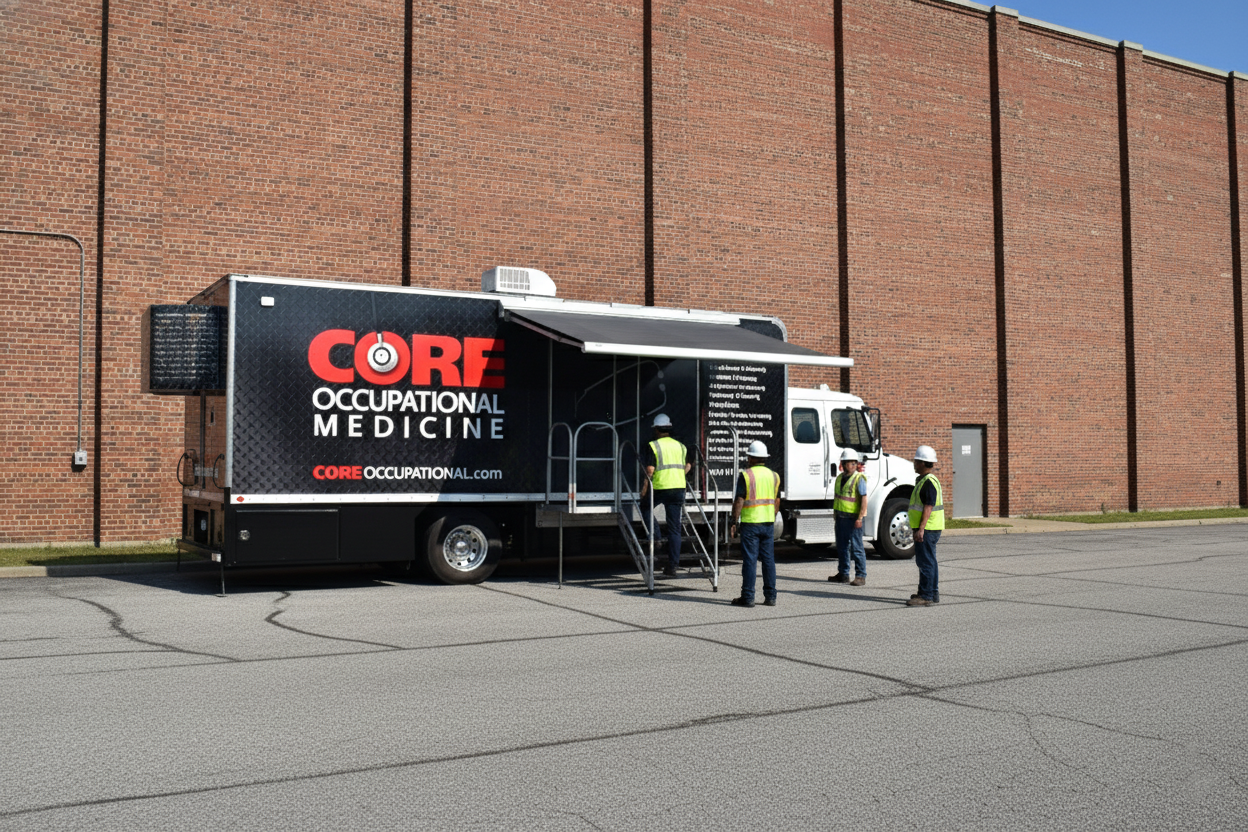
The whole world is facing multiple kinds of pollution, and one of them is noise pollution. Everyone experiences these buzzy sounds according to their exposure. However, the noise in the industrial area is most disturbing and continuous. From heavy machinery to constant equipment hum, workers are exposed to sounds that can slowly damage hearing over time. But here’s the good news: hearing loss is preventable.
An estimated 22 million workers in the U.S. are exposed to hazardous noise at work each year, so hearing conservation is a major public health and workplace issue. One of the most effective ways companies can protect employees is by using mobile audiometric testing. This approach brings hearing checks directly to the workplace, making them simple, convenient, and highly effective.
This blog covers the details about mobile audiometric testing, how it works, who benefits from it, and what advantages it offers. Let's uncover them.
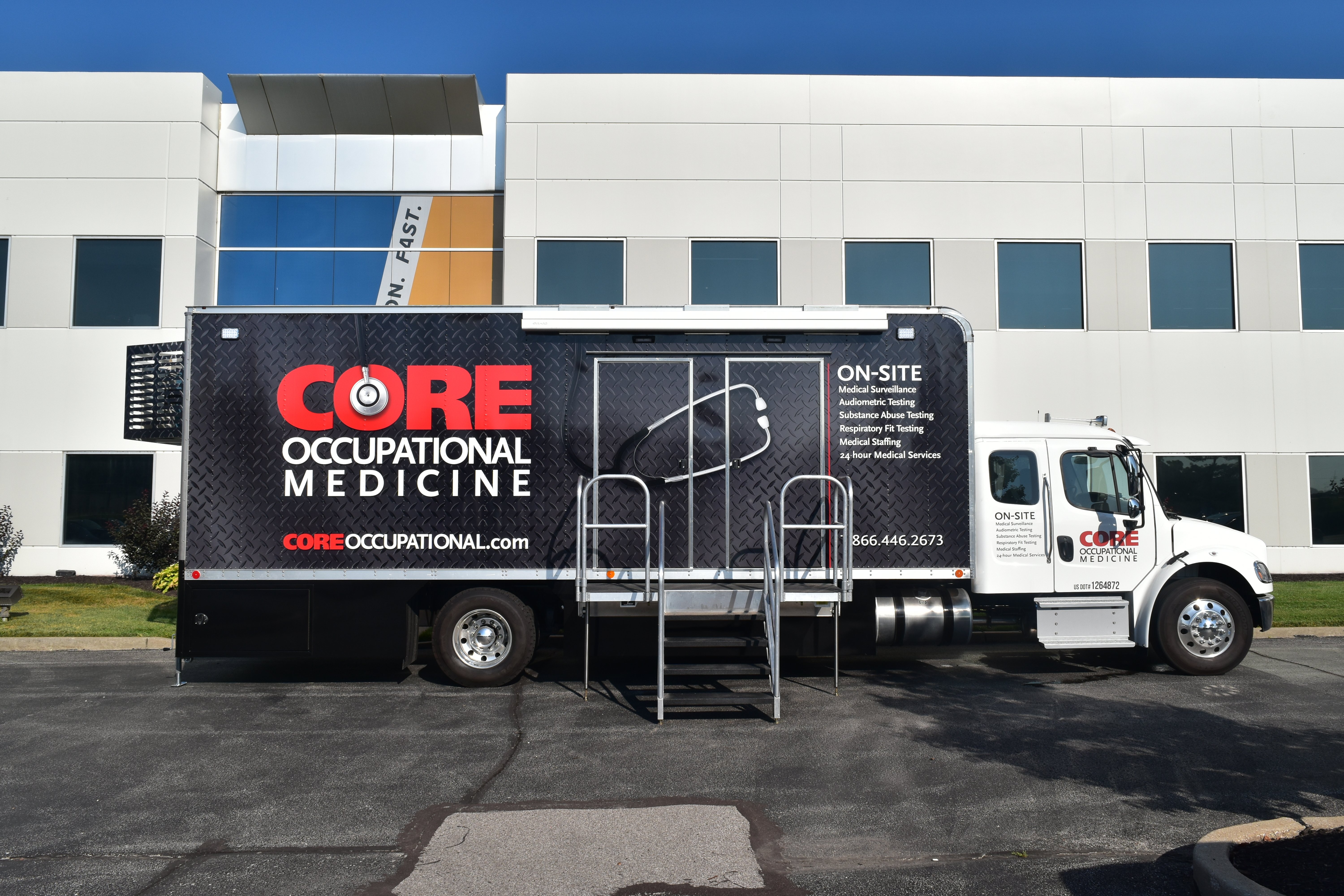
Hearing is one of the most important senses we rely on at work, especially in noisy industries. Mobile audiometric testing makes it easier for companies to protect workers’ hearing without pulling them away from the job site. It’s a simple, practical way to keep health checks running smoothly.
Mobile audiometric testing means conducting hearing exams right at the workplace. Instead of workers traveling to a clinic, trained technicians bring a mobile unit equipped with soundproof booths or calibrated headsets. These controlled setups ensure accurate results even when testing happens near busy worksites.
Unchecked hearing loss can affect job performance, safety, and daily communication. That’s why organizations like the Occupational Safety and Health Administration (OSHA) require employers to provide routine hearing tests for workers exposed to loud noise. Mobile testing helps companies stay compliant while making the process easier and less disruptive.
Traditional hearing tests usually require a clinical setting, which means travel time, downtime, and added costs for companies. Mobile testing solves this by delivering the same level of accuracy without the disruptions.
On average, each test takes about 10–15 minutes. This makes it easy to test dozens of workers in a single day without disrupting production schedules.
Hearing loss is more than a personal health issue; it’s a workplace safety risk. That’s why strong regulations exist to protect workers in noisy environments. Mobile audiometry also falls under many regulatory and safety measures. Let's dive in to learn more.
OSHA requires employers to monitor noise exposure levels. If workers are exposed to 85 decibels or more over an eight-hour shift, the company must implement a Hearing Conservation Program. This includes:
An OSHA study on hearing protection to prevent workplace injuries reveals that these rules are specifically designed to prevent permanent hearing damage and reduce workplace accidents related to impaired hearing.
A baseline audiogram is the first test an employee takes. This sets the standard for measuring changes in hearing over time. After that, OSHA requires annual follow-up tests. If a worker shows a Standard Threshold Shift (STS), it means their hearing has declined, and the employer must act on it. Mobile audiometric testing simplifies compliance by ensuring every worker gets tested on schedule without disrupting operations.
Not having the proper compliance isn’t just risky for workers, but it is costly for employers. OSHA penalties can reach thousands of dollars per violation. Beyond fines, companies risk lawsuits, lost productivity, and higher medical costs.
According to the National Institutes of Health (NIH), proactive hearing programs reduce healthcare costs and improve worker well-being. By investing in mobile audiometric testing, employers protect both their workforce and their bottom line.
Companies that fail to comply with OSHA’s hearing conservation standards may face significant fines, increased insurance costs, and even legal liabilities. Beyond the financial impact, non-compliance also puts workers’ long-term health at risk.
Mobile audiometric testing goes far beyond “checking a box” for compliance. It offers real advantages for both employees and businesses. Let's check how it serves the workers and even the organization.
One of the biggest benefits is convenience. Instead of traveling to a clinic, workers take their test on-site in minutes. There’s no wasted travel time, and production doesn’t slow down. For employers, this translates to reduced downtime and smoother scheduling. Testing can be done during shifts, breaks, or before/after work, minimizing disruption.
Not every company operates in a big city with easy access to clinics. Many industrial sites are rural or spread across multiple locations. Mobile testing ensures every worker gets equal access to care, no matter where they’re based.
When workers are tested regularly, even small changes in hearing can be caught early. Early intervention allows employers to upgrade hearing protection, modify noisy processes, or move workers to safer areas. This proactive approach can prevent long-term hearing loss, which is permanent and irreversible.
Investing in worker health shows employees that their well-being matters. This builds trust and boosts morale, which can lead to better engagement, higher productivity, and stronger retention. When safety feels like a shared value, workers are more likely to use protective equipment properly and take noise risks seriously.
Yes. When employees see that their employer invests in their health and safety, they feel valued. This often translates into higher trust, stronger job satisfaction, and a more positive workplace culture.
The process may sound complex, but mobile audiometric testing is designed to be seamless. Here’s what typically happens. It involves four steps:
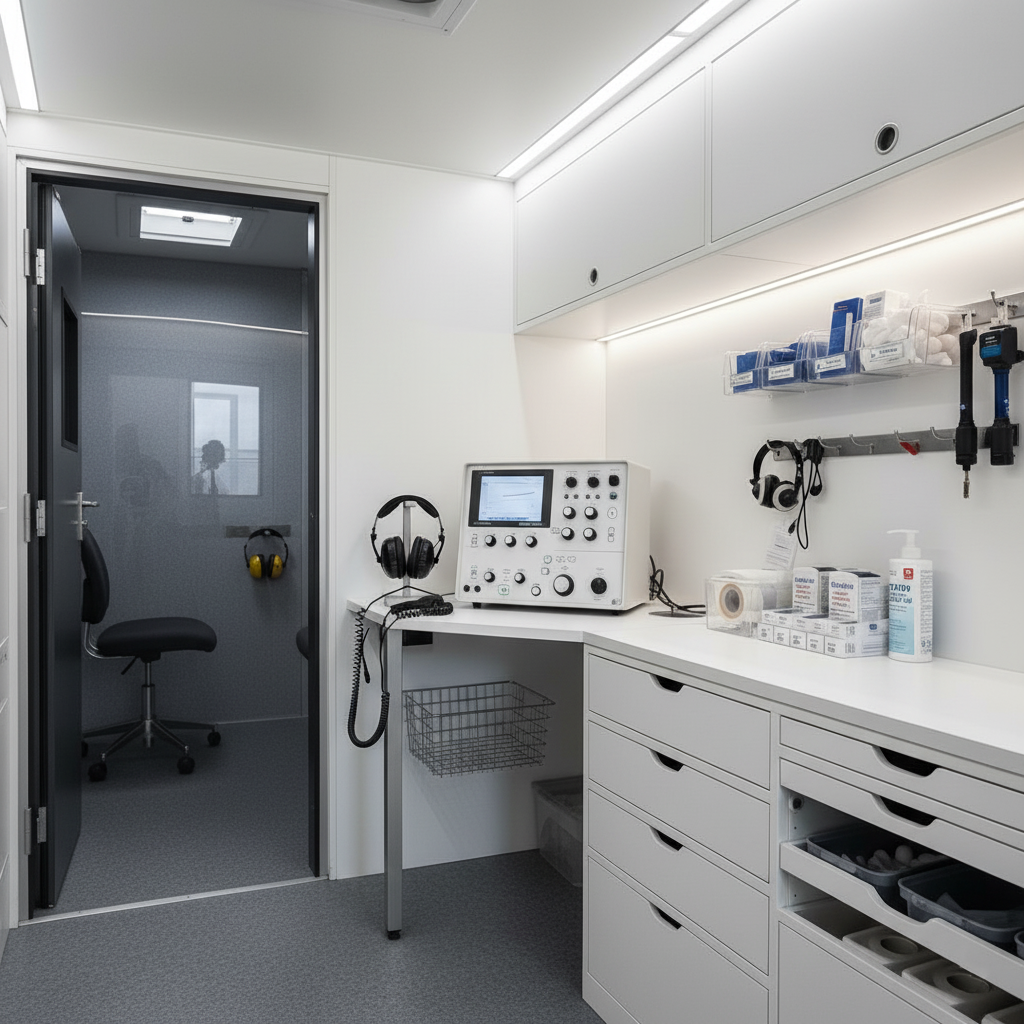
Let's discuss each of them one by one:
A mobile testing unit often consists of a medical trailer or van and arrives at the worksite. It’s equipped with soundproof booths, calibrated audiometers, and certified technicians. The unit is set up in a quiet, convenient location for easy worker access.
Employees are scheduled in small groups. Each test typically takes 10–15 minutes, meaning dozens of workers can be tested in a single day without slowing down operations.
The test itself is simple. Workers wear headphones and listen for beeps at different pitches and volumes. They press a button when they hear the sound, allowing the technician to measure their hearing thresholds across frequencies.
Results are stored securely and compared against the worker’s baseline test. Employers receive reports that track hearing health trends across the workforce. If shifts in hearing are detected, they can take corrective action quickly.
Even with its benefits, mobile audiometric testing can face hurdles. Thankfully, most are easy to solve. Let's discuss them.
Industrial sites are noisy by nature, but testing requires a controlled environment. Mobile testing booths are built to block out external noise. Plus, modern audiometers have background noise monitors to ensure accuracy.
For companies with hundreds of employees, scheduling can be tricky. The solution is phased testing and breaking groups down by shift, department, or location. Mobile providers are skilled at handling large-scale testing smoothly.
Accurate results depend on properly calibrated equipment. According to OSHA government guidelines for annual audiometer calibration, audiometers must be calibrated annually. Reputable providers handle calibration and certification to guarantee reliability.
Mobile testing isn’t just a compliance expense; it’s an investment with measurable returns. Let's discover how it pays you back.
Mobile audiometric testing is more than just a compliance requirement. It’s an investment that delivers measurable benefits for both employees and employers.
Sending workers to external clinics can be costly. Travel time, waiting periods, and lost productivity all add up. Mobile testing eliminates these hidden expenses by bringing the screening directly to the workplace. Employees spend less time away from their duties, and companies save on labor costs while maintaining a safer, healthier workforce.
OSHA regulations require timely hearing tests and proper record-keeping. Failing to comply can result in steep fines and costly inspections. Mobile testing helps employers stay on top of these requirements, making sure all workers are tested on schedule and records are audit-ready. This proactive approach minimizes the risk of penalties and supports a safety culture.
Early detection of hearing loss protects workers from permanent damage and long-term health issues. According to NIOSH, prompt identification of hearing changes allows for early intervention, improving treatment outcomes and reducing the likelihood of disability claims. Healthier employees are more productive, engaged, and less likely to experience career-limiting hearing problems.
Mobile audiometric testing is flexible and employee-friendly. By bringing screenings to the workplace, employees are more likely to participate, improving overall compliance rates. The convenience encourages regular testing, reinforces the company’s commitment to worker health, and builds trust between staff and management.
Rolling out a mobile audiometric testing program isn’t just about scheduling a provider and lining up employees. To get the best results, companies need a thoughtful approach that balances logistics, communication, and ongoing follow-up. A well-run program builds long-term trust with workers and ensures compliance with ease.
Jumping in across multiple sites can be overwhelming. Instead, test the process at one location first. A pilot program gives managers time to see how mobile testing fits into daily operations. You can identify issues with scheduling, employee flow, or reporting before expanding across the entire company. Once the pilot runs smoothly, scaling up becomes much easier.
Transparency is key. Workers may worry that test results could be used against them or that failing a hearing test could affect their job. Reassure employees that these tests are not about punishment, but they’re about protection.
You can encourage participation by holding a short safety meeting before testing begins, sharing simple handouts explaining how the test works, and emphasizing that results are private and used only for health and safety purposes. When employees feel respected and informed, participation rates go up dramatically.
Audiometric testing works best when it’s part of a larger Hearing Conservation Program (HCP). This means pairing testing with:
When hearing protection is reinforced through education and testing, workers are more likely to take noise risks seriously.
Data is a powerful tool. Annual reports provide more than compliance records, they give insights into workplace risks. For example, if a particular department shows more hearing shifts than others, it could point to equipment that needs maintenance or areas that require better sound barriers. Reviewing and acting on data each year makes your program proactive rather than reactive.
Employ certified technicians who use properly calibrated audiometers. Calibration records should be kept and reviewed regularly. Follow established public-health and clinical manuals for guidance on proper procedures and calibration.
The way we approach hearing health in the workplace is changing rapidly. Mobile audiometric testing has already made hearing checks more accessible and efficient, but the future holds even greater possibilities. As technology advances, companies will be able to protect workers more proactively, customize solutions, and monitor risks in real-time.
One of the most promising trends is the development of smart hearing protection devices. Instead of simple foam earplugs or earmuffs, future devices will likely include sensors that measure sound exposure continuously throughout a shift.
Mobile audiometric testing provides valuable data about hearing shifts over time. In the future, Artificial Intelligence could take that data and predict which employees are most at risk before significant hearing loss occurs. Imagine software that,
This proactive approach shifts hearing conservation from reactive (after damage is found) to preventive (before damage occurs).
Right now, most mobile testing providers deliver reports annually or semi-annually. In the future, companies could access real-time dashboards that track hearing test results across multiple sites. Benefits of cloud integration may include immediate alerts when shifts in hearing are detected, centralized records for large, multi-location businesses, and easier audits, with OSHA-compliant data stored securely and available on demand. This makes hearing conservation programs far more transparent and actionable.
As technology evolves, so will regulations. Agencies like OSHA and NIOSH are likely to update standards to reflect these new tools. This may include requirements for continuous noise monitoring or digital record-keeping. Companies that adopt these technologies early will not only stay compliant but also set the standard for best practices in their industries.
Ultimately, the future of hearing conservation is about making workplaces safer and workers healthier. Instead of reacting to hearing loss after it occurs, employers will have tools to predict, prevent, and protect. The goal is clear, which is that no worker should have to sacrifice their hearing to earn a living. Mobile audiometric testing is the foundation, but the future promises even more powerful solutions.
Protecting hearing isn’t just about compliance, but it’s about protecting people. Noise-induced hearing loss is permanent, but with proactive programs like mobile audiometric testing, businesses can safeguard their workforce, avoid costly claims, and build a reputation for safety leadership.
At Craftsmen Industries, we understand that every minute counts in industrial operations. That’s why our mobile testing solutions are designed to be fast, accurate, and completely workplace-friendly. We bring certified technicians and state-of-the-art equipment directly to your site, so your workers get the care they need without losing valuable time.
Whether you manage a manufacturing plant, construction site, or multi-location operation, our mobile audiometric testing services help you stay compliant, boost employee confidence, and create a stronger safety culture. Because when you protect hearing, you’re protecting your workforce’s future.
Are you ready to take the next step? Contact Craftsmen Industries today to get a custom mobile medical unit.
Workers exposed to high noise levels must undergo annual testing, with a baseline test completed when they start.
Yes. With proper calibration and certified technicians, mobile tests meet the same standards as clinic-based exams.
If a shift is detected, a follow-up test is done. If confirmed, the worker may need medical evaluation, and employers must adjust protective measures.
Yes, mobile testing scales to any business size, making it a cost-effective solution even for small teams.
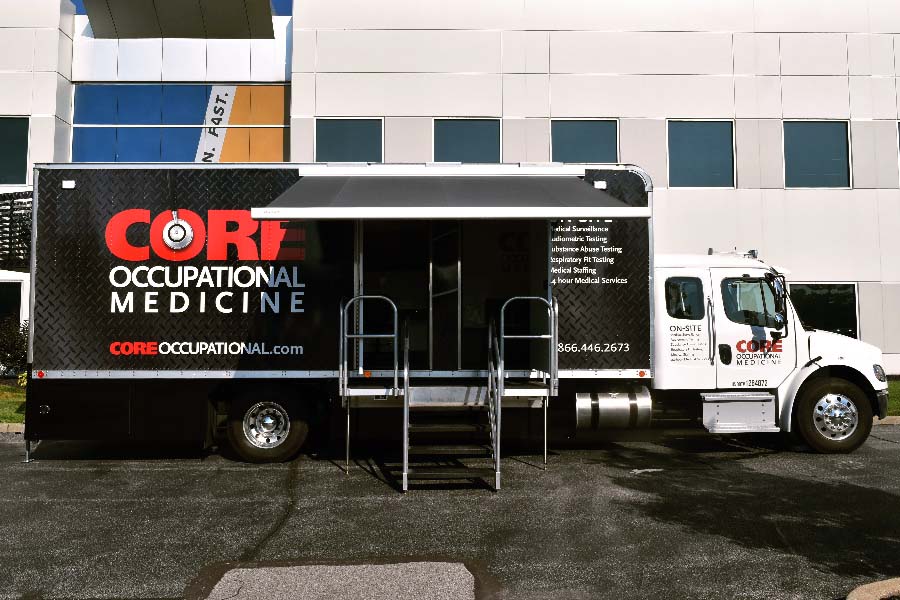
In a world filled with constant noise and auditory stimuli, the significance of maintaining healthy hearing cannot be overstated. Hence, in this...
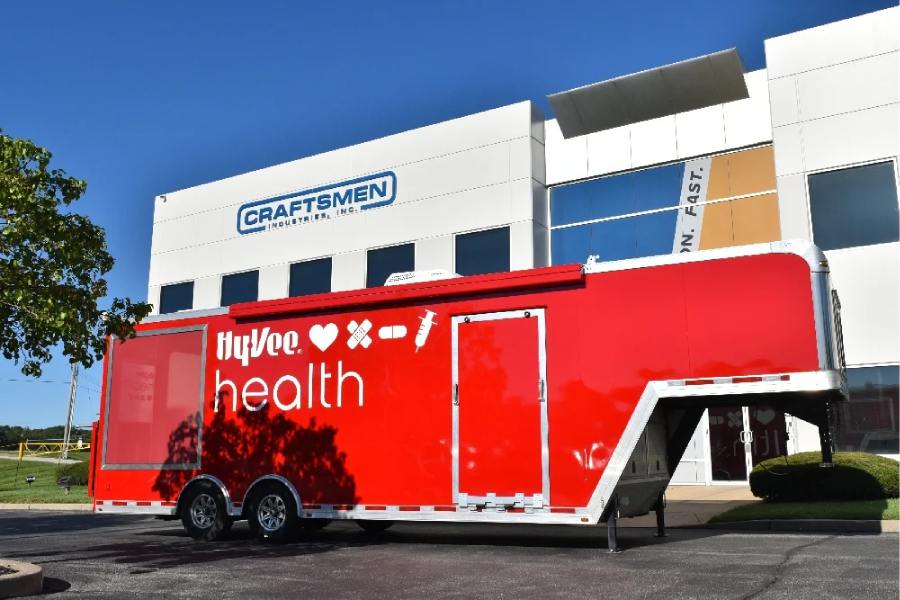
All medical facilities must adhere to government safety regulations. If your healthcare facility is considering expanding its services, you might...
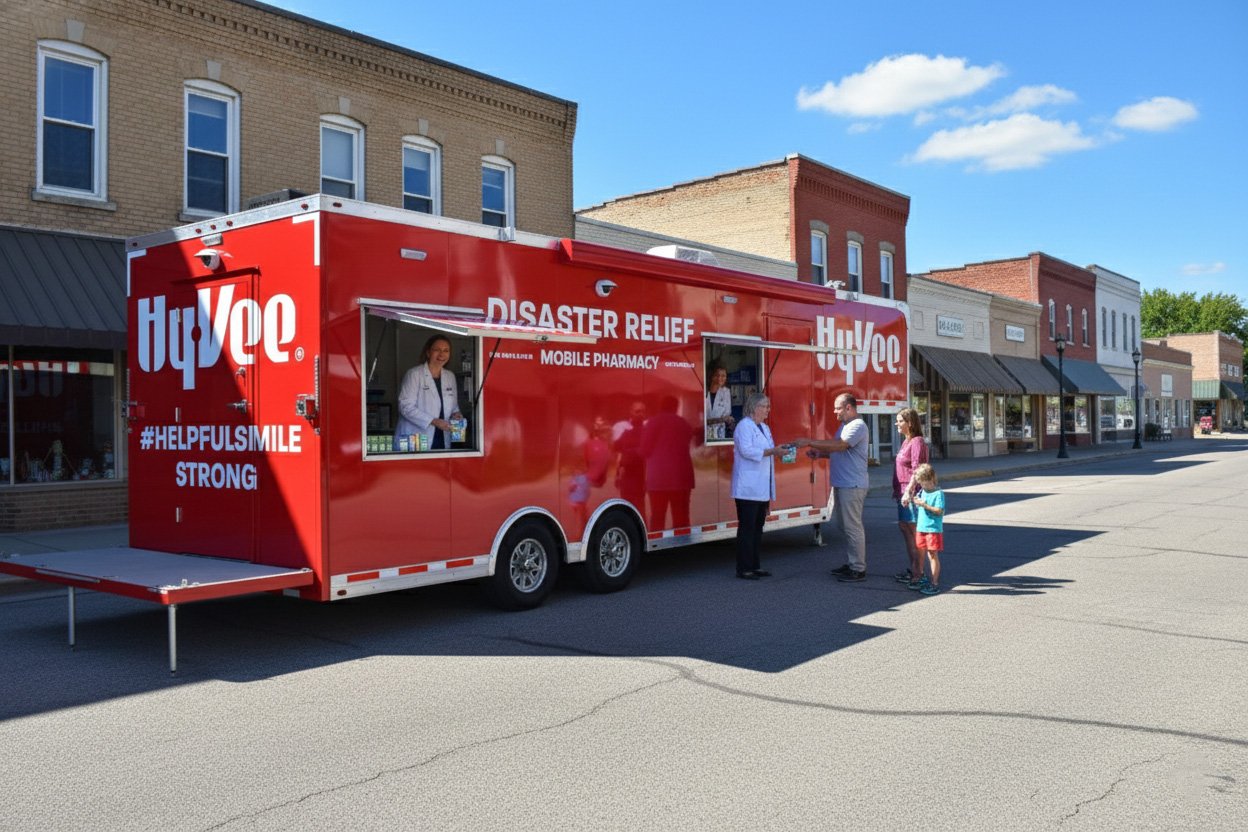
Access to essential health care and medication is the right of every person living in this world, regardless of where they live. Millions of people...